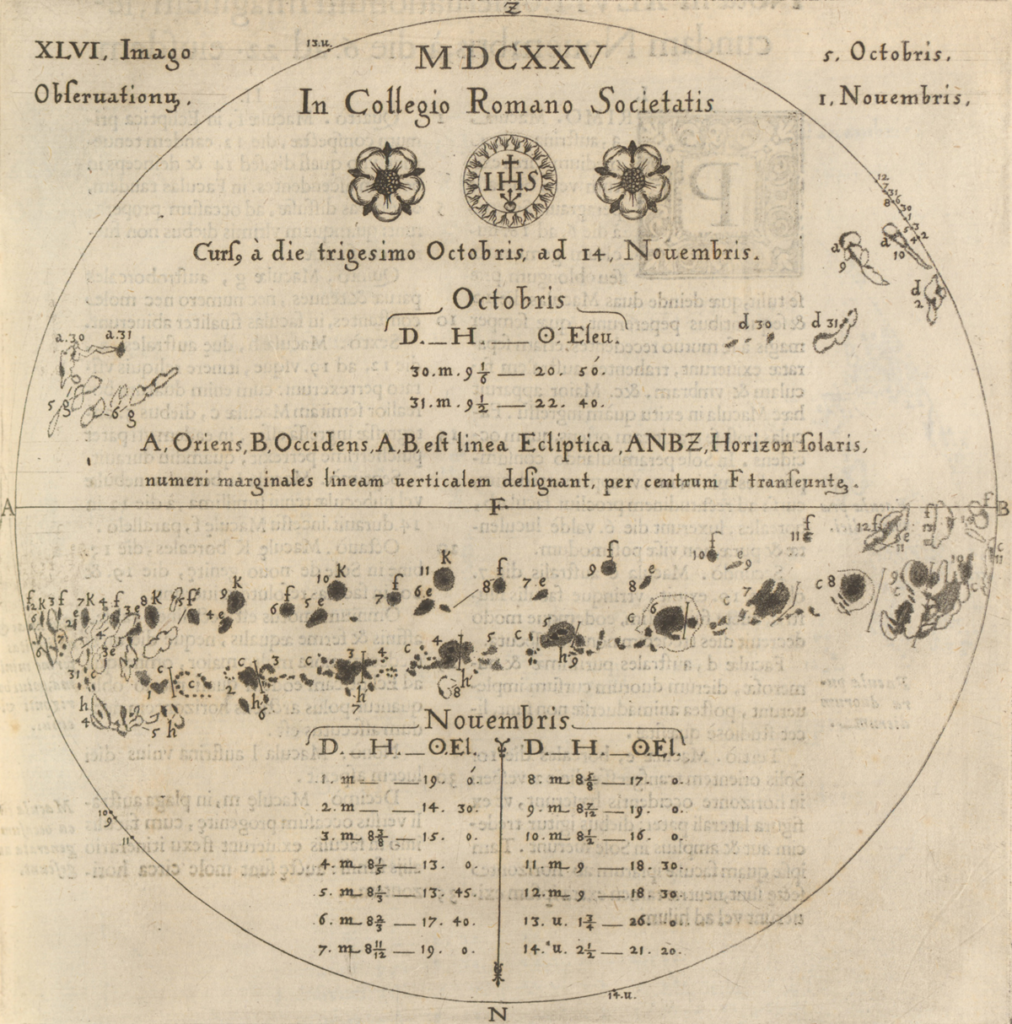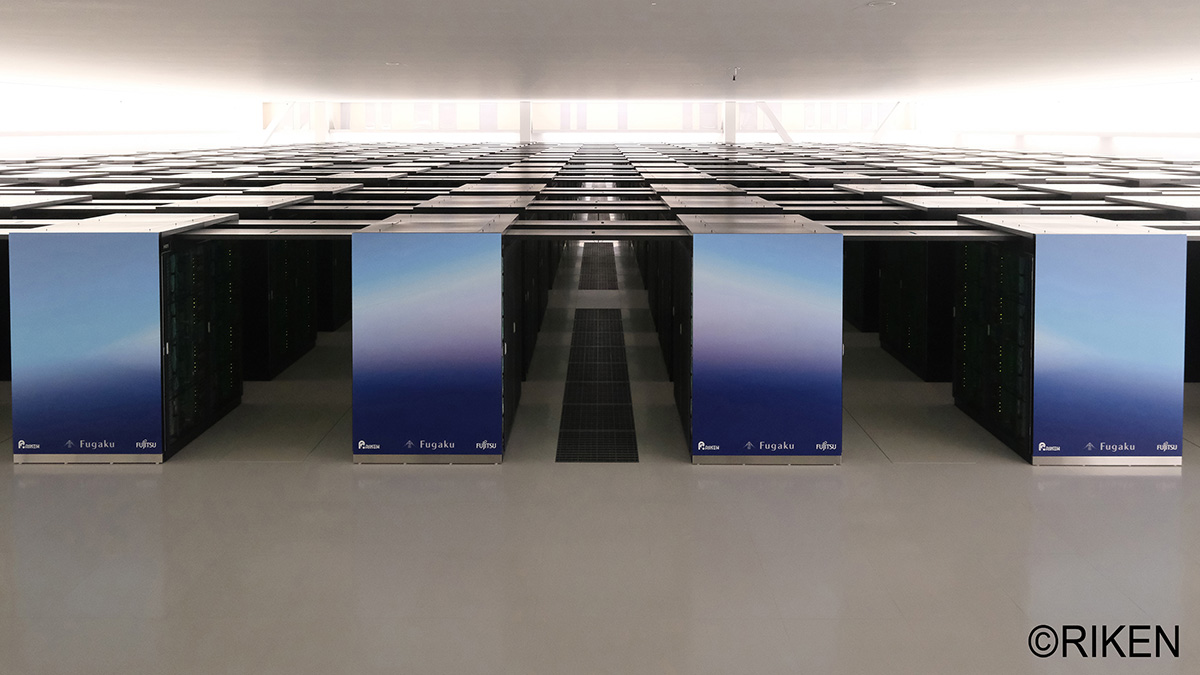Japanese scientists said they have created the first accurate computer simulation of how the Sun rotates, reproducing a phenomenon in which its equatorial area spins faster than its polar regions. The insight could help explain the whys and hows of the solar cycle, one of the biggest mysteries of our star.
In a Nature Astronomy letter, the researchers described how they used a supercomputer named Fugaku, currently ranked the most powerful in the world, to re-create the Sun’s more rapid equatorial rotation, something previous computer simulations were unable to achieve. Earlier attempts resulted in the poles rotating faster than the equator, but modeling the movement of 5.4 billion convection points inside the Sun did the trick.
“Our calculations indicate that the strong magnetic field generated by a small-scale dynamo has a significant impact on thermal convection,” the researchers wrote. “The successful reproduction of the differential rotation, convection and magnetic field achieved in our calculation is an essential step to understanding the cause of the most basic nature of solar activity, specifically, the 11 yr cycle of sunspot activity.”
From Helioscopes to Supercomputers
The Sun is a giant ball of mostly hydrogen gas and plasma. Like Earth, it rotates on its axis, but the speed varies by latitude (as is the case with gas giants Jupiter and Saturn). Around the Sun’s equator, the rotation period is about 25 days, whereas it’s roughly 30 days near the poles. This differential rotation can be measured several ways, including by observation of sunspot movement.
It was sunspots that provided one of the first clues that the Sun was in motion. Christoph Scheiner, a 17th century Jesuit priest and astronomer, built an elaborate wooden projector called a helioscope to record sunspots and spent years logging their motions. On the basis of his observations in the 1630 book Rosa Ursina, Scheiner is credited with discovering differential solar rotation and being the first to measure the Sun’s equatorial rotation, which he estimated at 28 days.

In the centuries since then, scientists accumulated a detailed record of sunspot activity and studied its relationship to the solar cycle, the time it takes to reverse the Sun’s magnetic field, which is generated by the process of the solar dynamo. One goal of simulating the inner workings of the Sun is to understand how these processes work.
“The differential rotation is an essential ingredient of the solar dynamo, and thus we started researching it,” said Hideyuki Hotta, an associate professor at Chiba University’s Graduate School of Science and coauthor of the study. “The differential rotation is a large-scale flow but maintained by small-scale turbulence and the magnetic field. The complicated interaction between the large- and small-scale phenomena is worth studying.”
Simulations of the Sun’s rotation didn’t capture its peculiarities because they did not include turbulence, said Hotta. Prior to running the simulation, he believed that some unknown physics had to be involved, but it turned out to be a question of computing power and the experiment’s resolution. The $1 billion supercomputer Fugaku, launched ahead of schedule in 2020 to help fight the COVID-19 pandemic, boasts 158,976 computing nodes and the ability to perform 442 quadrillion calculations per second; it also has been used to predict the flow of coronavirus particles and tsunami flooding. To simulate the Sun’s interior and rotation, Hotta and coauthor Kanya Kusano, director of the Institute for Space-Earth Environmental Research at Nagoya University, ran their simulation on 41,472 cores for about 20 days. The results of the experiment included videos of the Sun’s radial velocity and magnetic field.

“The differential rotation has large-scale shear, that is, flow speed difference, stretching and amplifying the magnetic field,” said Hotta. “Our successful reproduction of the differential rotation can provide [the means to] more precisely follow the process. In addition, for the solar dynamo, turbulence in the solar convection zone is essential.”
“Groundbreaking Discovery”
“This is a groundbreaking discovery.”
“Super-high-resolution computer simulations dig deep into the solar convection zone to reveal why the Sun’s equator rotates faster than its pole; this is a groundbreaking discovery,” said Mausumi Dikpati, a senior scientist in the High Altitude Observatory at the National Center for Atmospheric Research in Boulder, Colo., who was not involved in the study. “Understanding the physical foundation for simulating the Sun’s differential rotation pattern and profile correctly is the first step toward simulating the 11-year solar cycle and its implication on space weather.”
Hotta wants to further increase the resolution of simulations and include the Sun’s surface, which he and Kusano simulated previously but without the rotation and magnetic field. Hotta believes a global simulation of the Sun including its deep interior may be possible to some extent on Fugaku. He also hopes future results could help improve predictions of the solar cycle, which began its latest phase in December 2019.
—Tim Hornyak (@robotopia), Science Writer

